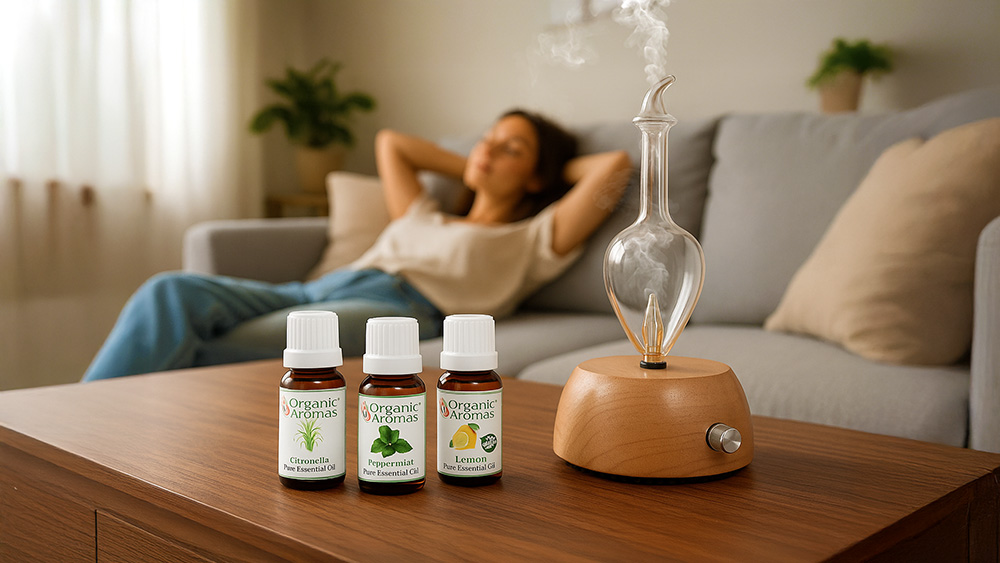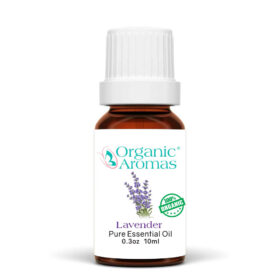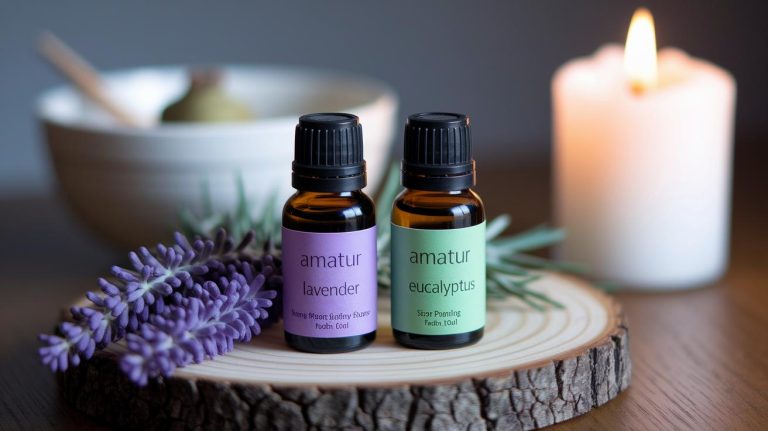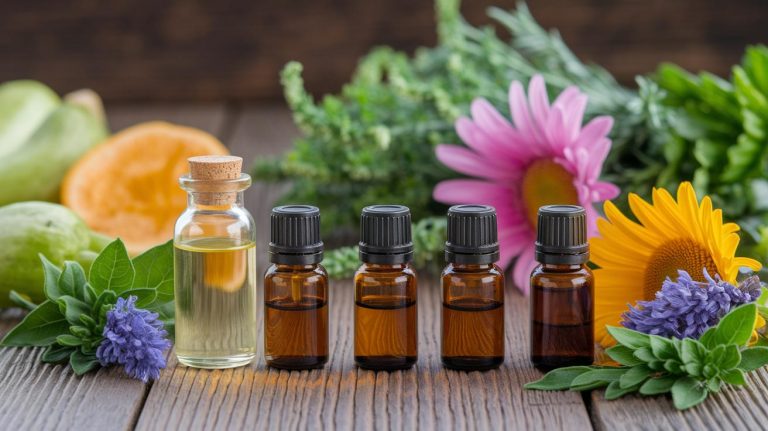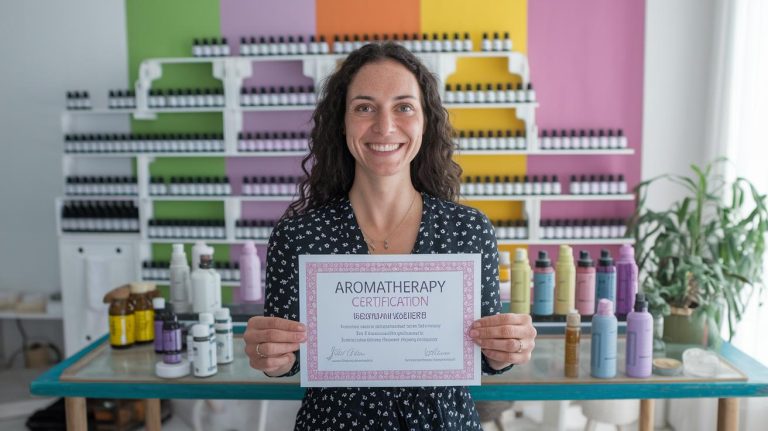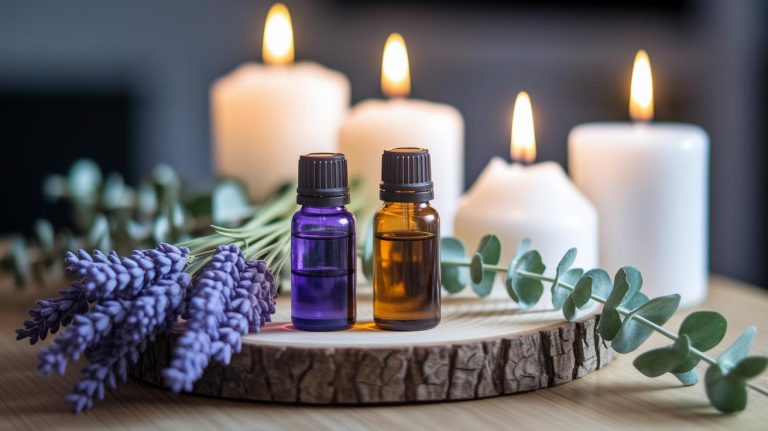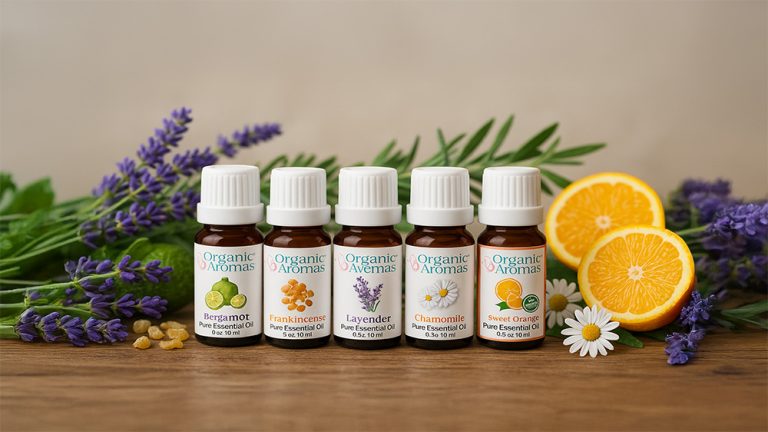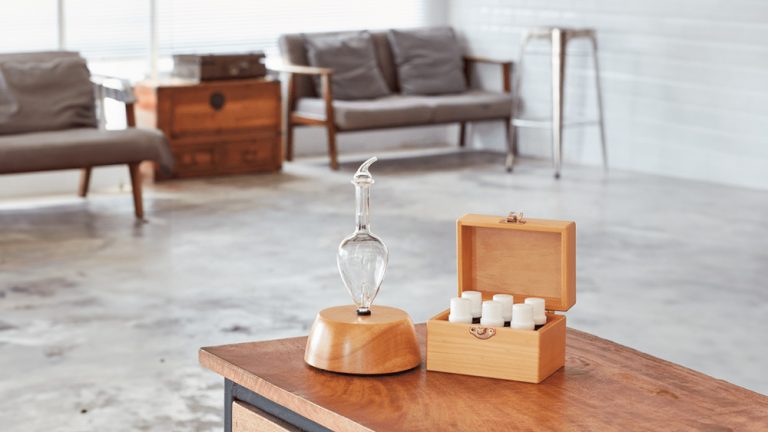5 What Are Essential Oils Loved for Wellness
Have you ever caught a simple breeze of peppermint and felt your mind snap awake?
It’s like a soft brightness dancing across your thoughts.
Essential oils are a fantastic way to enhance your overall wellness while enjoying their refreshing scents.
Incorporating essential oils into your daily routine can greatly contribute to your wellness.
With essential oils, you can create a dedicated space for your wellness rituals and relaxation.
Essential oils (pure plant extracts) hold nature’s tiniest gifts, natural aromas and therapeutic compounds that float in the air to calm or energize your senses.
Wait, let me rephrase that… Um, they’re like a gentle ripple of calm or a spark of focus.
Next, we’ll look at five easy ways these fragrant drops help melt away stress, sharpen focus, improve sleep and more.
Then you’ll see how just a few drops in an Organic Aromas Mobile-Mini 2.0 release a fine mist that fills your room with nurturing calm.
5 What Are Essential Oils Loved for Wellness
They play a crucial role in promoting emotional and physical wellness.
Using oils like lavender can enhance your wellness experience.
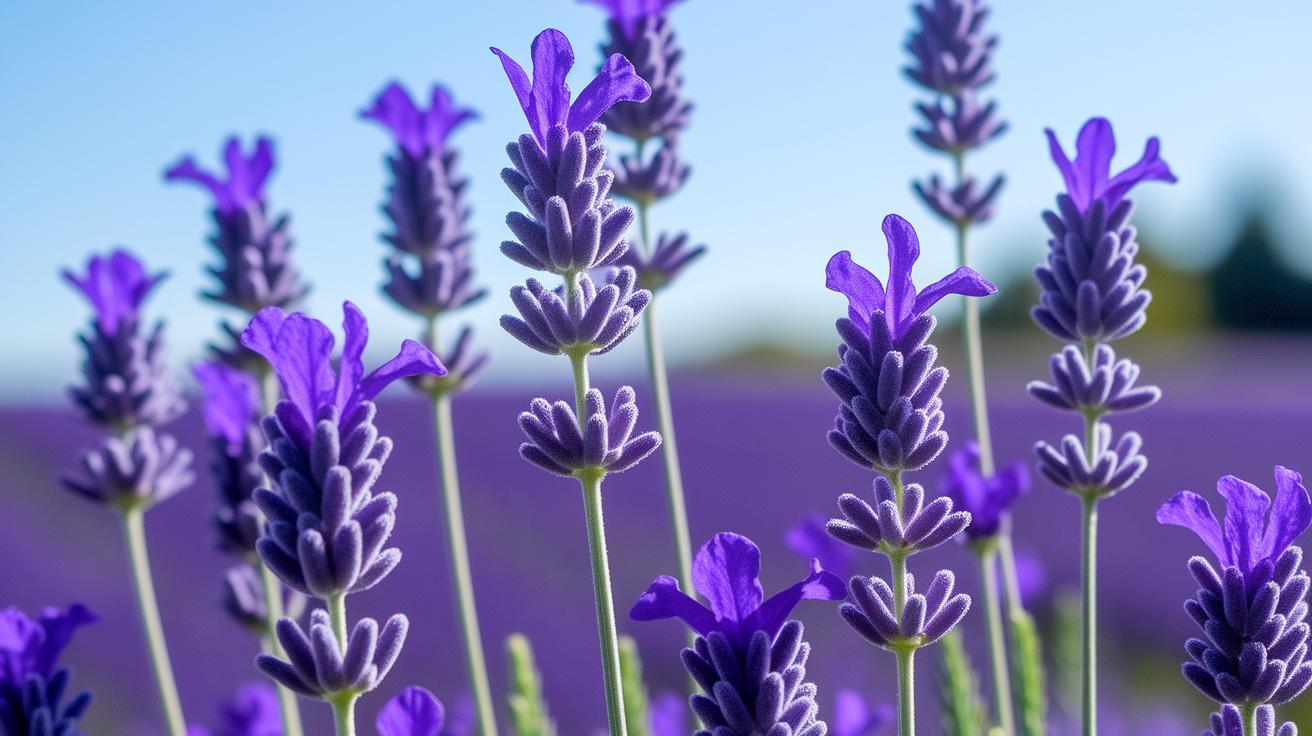
Have you ever wondered what makes essential oils so special for feeling well?
Essential oils are tiny drops of plant essence that carry a plant’s scent and soothing parts (therapeutic compounds). They come from roots, stems, leaves, flowers, or bark and pack a big punch of goodness.
Next, we gently pull out these oils with three simple methods!
- Steam distillation (using steam to turn oils into vapor, then cooling them back into liquid)
- Cold pressing (pressing citrus peels to squeeze out the oil)
- Solvent extraction (using a mild liquid to draw out the scent)
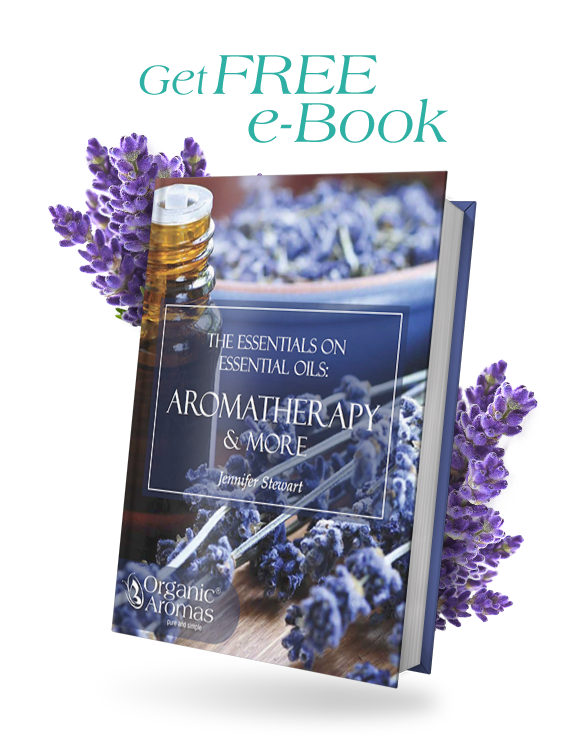
Sign Up to Get Your FREE
e-Book Here…
Steam distillation is great for delicate flowers and leaves. As steam drifts through the plants, it lifts tiny scent molecules. When it cools, the mix splits into oil and a gentle floral water (hydrosol). This keeps fragile parts like monoterpenes (tiny scent molecules that give fresh, uplifting notes) intact.
Here’s how much plant it takes for just a little oil:
These experiences contribute positively to your overall wellness.
| Plant | Plant Amount | Oil Yield |
|---|---|---|
| Lavender flowers | 250 pounds | 1 pound of oil |
| Rose petals | 5,000 pounds | 1 pound of oil |
In fact, people in ancient Egypt used these oils to scent linens and in rituals. Such a sweet history.
Each drop is a mix of natural parts called phytochemicals. These include:
- Terpenes (tiny volatile molecules that smell piney or citrusy)
- Phenolic compounds (strong antioxidants that might help fight microbes)
- Flavonoids (plant pigments that bring calming aromas)
And um, here’s something to try: breathe in the pure mist from a nebulizing (how a fine mist delivers undiluted essential oils) diffuser like the Organic Aromas Mobile-Mini 2.0. You’ll feel the aroma ripple through the air, ready to support your body and mind. Calm. Focus. Refresh.
Doesn’t that sound nice?
Popular Essential Oil Varieties and Their Uses
They are a key element in achieving holistic wellness.
Consider the impact of each oil on your wellness journey.
Each oil can serve a distinct purpose in your wellness regimen.
Have you noticed how different essential oils can really set a mood? Oils group into five botanical families, citrus, floral, wood, spice, and herbal. Each has its own vibe and purpose. Ready to explore?
Elevate your wellness with the unique properties of each oil.
Citrus oils (lemon, orange, bergamot, lemongrass) toss bright, zesty mist into your space.
- Lift your mood with a burst of sunshine
- Boost focus during long work sessions
- But watch out for photosensitivity, avoid sun on skin after use
Understanding this can help you maximize your wellness potential.
Lavender floral oil brings calmness, like a gentle breeze at dusk.
- Soothes stress and helps you sink into deeper sleep
- It was once used to clean hospital wards because of antiseptic action
- Perfect in a bedtime Raindrop® blend, always dilute before applying to skin (1–2% dilution)
Cedarwood wood oil offers a grounding, earthy aroma.
- Eases tension with warm, forest-like notes
- Its antibacterial quality makes a subtle air freshener
- Safe in your Radiance® diffuser at 2–3 drops per session
Frankincense spice oil adds a hint of ancient spice to soothe and balance.
- Calms inflammation and supports clear breathing
- Valued for gum health and spiritual rituals
- Must dilute in a carrier oil, aim for 1–2% strength
Tea tree and rosemary herbal oils bring fresh, green energy.
- Tea tree helps tackle minor acne or athlete’s foot, dilute for skin because it’s potent
- Rosemary uplifts your mood, sparks hair growth, and eases joint discomfort
- Skip rosemary if you have epilepsy, high blood pressure, or are pregnant
Here’s the thing. Mix a few drops from these categories in a nebulizing (how a fine mist delivers undiluted essential oils) diffuser like the Organic Aromas Mobile-Mini 2.0. Then sit back, breathe, and let your own wellness ritual unfold.
They can transform your environment into a haven for wellness.
Lavender Essential Oil 100% Pure Organic
Application Techniques for Essential Oils: Diffusion, Topical, and More
Diffusion means letting pure essential oil aroma drift gently through your room. You can choose a water-based ultrasonic diffuser for a soft, whispering mist. Or reach for the Organic Aromas Mobile-Mini 2.0 nebulizing diffuser (how a fine mist delivers undiluted essential oils) if you want a richer aroma ripple.
This practice is crucial for enhancing your wellness.
Here are a few simple diffusion methods:
- Water-based ultrasonic: 3–5 drops per 100 mL water
- Nebulizing diffusers: 1–2 drops neat, no water needed
- Diffuser recipes: lavender and bergamot for calm; eucalyptus and peppermint for focus
Want a scent pick-me-up on the go? Direct inhalation keeps your favorite aroma close. Try steam inhalation with a bowl of hot water or these quick sniff formats:
- Personal inhalers you can slip in your pocket
- Blotter strips tucked in a book or planner
- A drop on your palms, then cup your hands and breathe
When you apply oils on your skin, it’s called topical application. Always dilute in a carrier oil first. Roller bottles smooth on easily for on-the-go relief.
Massage blends help you melt away tension. And bath oils turn your tub into a mini spa.
Common topical methods:
- Roller bottles with 2–3% dilution in jojoba or almond oil
- Massage blends at 2–5% dilution for adult use
- Bath oils: 5–10 drops per tub, swirled into warm water
For ingestion warnings, patch tests, and detailed dilution charts, see the Safety section. For more friendly tips on diffusing and topical use, check out the aromatherapy beginner guide.
Therapeutic Benefits of Essential Oils and Their Mechanisms
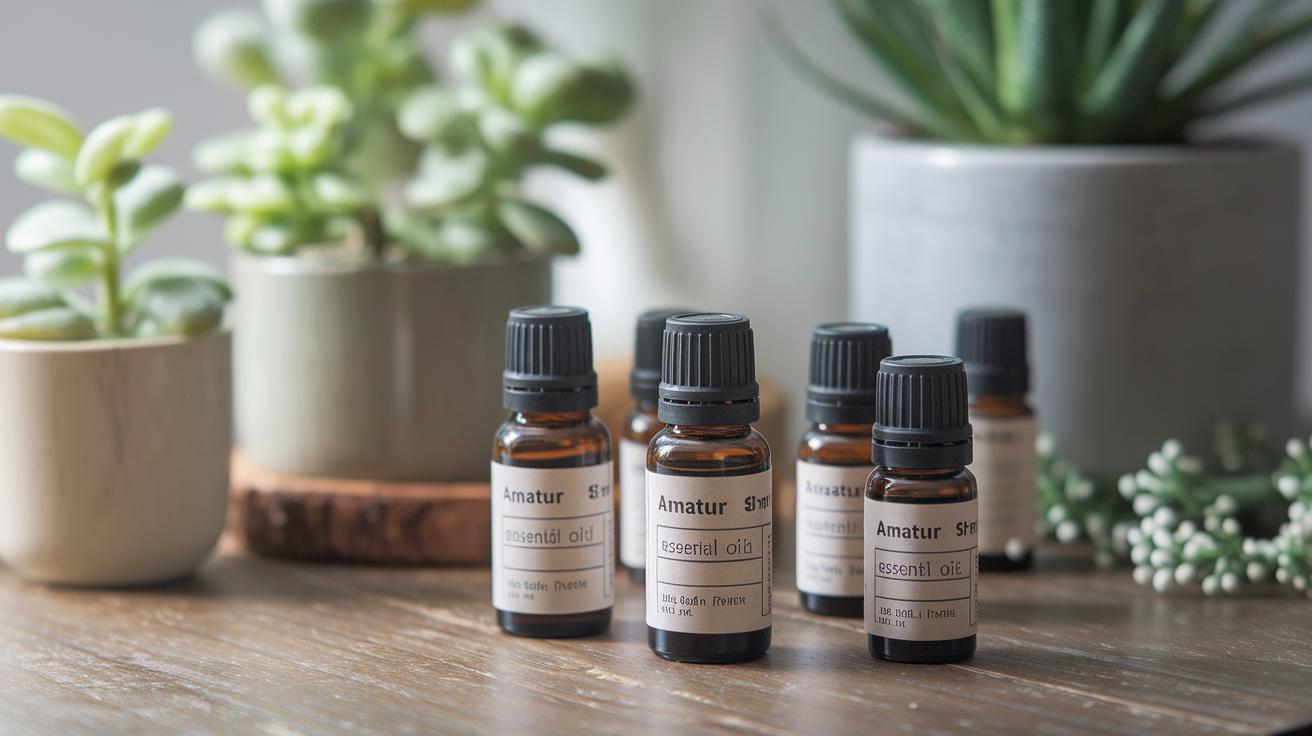
Aromatherapy wakes up your limbic system (the brain’s emotion, memory, breathing, and heart rate center). When a fine mist drifts into your nose, tiny aroma molecules spark gentle signals in your nervous system. You breathe in. Your brain takes note!
They’re small studies, but breathing in Lavender or massaging it into your skin can ease anxious thoughts and ease tight shoulders. Have you felt how soft waves of Lavender calm your mind? Peppermint and Lavender can also offer mild headache relief. And in traditional recipes, a blend of Chamomile and Sesame oil gently soothes migraine pain.
In the lab, oils show anti-inflammatory (calming swelling), antimicrobial (fighting germs), and antioxidant (shielding cells from damage) power. But they’re still limited, so real-life effects can vary.
Wait, let me rephrase that… Part of how oils work comes from plant compounds (phytochemicals). Linalool in Lavender may talk to GABA receptors (brain keys that ease stress). Menthol in Peppermint taps TRPM8 receptors (sensors that cool tense spots). When you inhale these pure aromas, um, tiny molecules slip past your nose and spread calm or focus.
Citrus oils, like Lemon or Orange, can lift your mood and sharpen your focus, especially if you need a bright morning boost. Try this stress-busting mix:
- 3 drops of Lavender
- 2 drops of Bergamot
to your Organic Aromas Mobile-Mini 2.0 nebulizing diffuser (how a fine mist delivers undiluted essential oils). Then, breathe. Relax.
For sleep support, Chamomile or Ylang-Ylang drift through your room like a soft lullaby before bedtime. Have you noticed how a single drop of Lavender feels like a gentle hug for your mind?
Essential Oil Safety: Dilution, Contraindications, and Adverse Effects
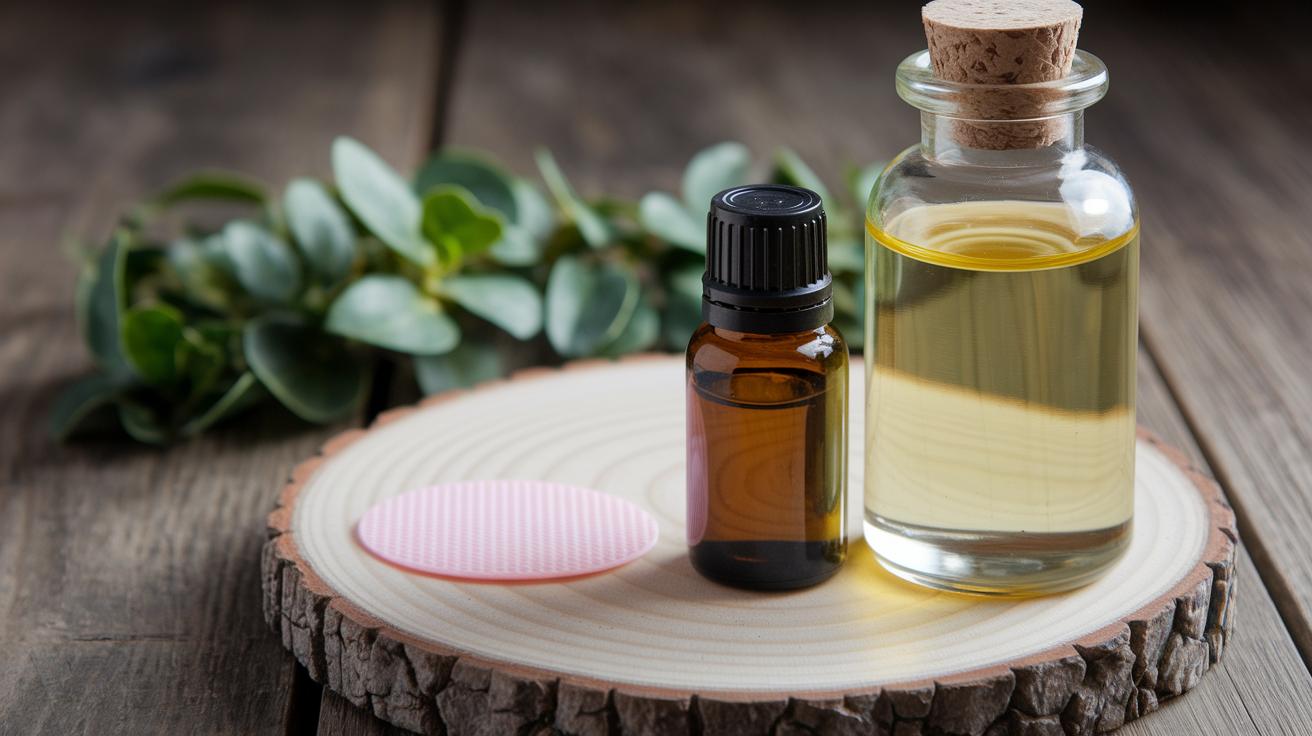
At Organic Aromas, we want you to enjoy pure plant scents, safely. So, how do you know if an oil suits your skin? Try a patch test. Drop a little oil on unbroken skin (like your inner forearm), cover it, and wait 24 hours. No redness or itch? You’re all set.
Next, here’s an easy guide for mixing essential oils with a carrier oil (plant-based oil that helps spread the scent):
- 1% for kids or sensitive skin: 1 drop essential oil per teaspoon of carrier oil
- 2-5% for adults: 5-15 drops essential oil per ounce (30 mL) of carrier oil
- Carrier oil options: coconut oil, jojoba oil, or almond oil
Next, let’s talk about misting your space with your Radiance® diffuser or Mobile-Mini 2.0. If you’re using an ultrasonic diffuser (which uses water and sound waves to send a fine mist), add 3-5 drops to 100 mL of water. Or try a nebulizing diffuser (how a fine mist delivers undiluted essential oils) with 1-2 drops, no water needed. Listen to the gentle hum as that aroma drifts around the room.
Sharing these tips can empower others in their wellness journey.
Remember, wellness begins with self-care and awareness.
Thinking of a taste? Please be cautious. Only use oils labeled safe for internal use and always do so under a pro’s guidance. A common limit is 1 drop per teaspoon of carrier oil.
In truth, undiluted oils can sting or even cause a chemical burn. Citrus oils make you extra sensitive to sunlight – keep covered if you plan to go outdoors. Watch for redness or warmth as signs to stop.
These oils support emotional wellness, helping to balance your mood.
Tea tree and eucalyptus may not suit children, pets, or pregnant friends. And if your immune system feels weak or you’re over 65, take it slow. Safety first – always.
Here’s the thing about labels: essential oils aren’t FDA regulated, so terms like “pure” or “medical grade” don’t have a set meaning. We suggest checking GC/MS reports (lab tests that show oil purity) or chatting with a certified aromatherapist.
Explore how these benefits connect to your personal wellness goals.
For detailed dilution charts and step-by-step safety tips, check the essential oil dilution chart. Breathe. Enjoy.
Integrating them into your life can lead to improved wellness.
Ensuring Quality of Essential Oils: Purity, Certification, and Storage Best Practices
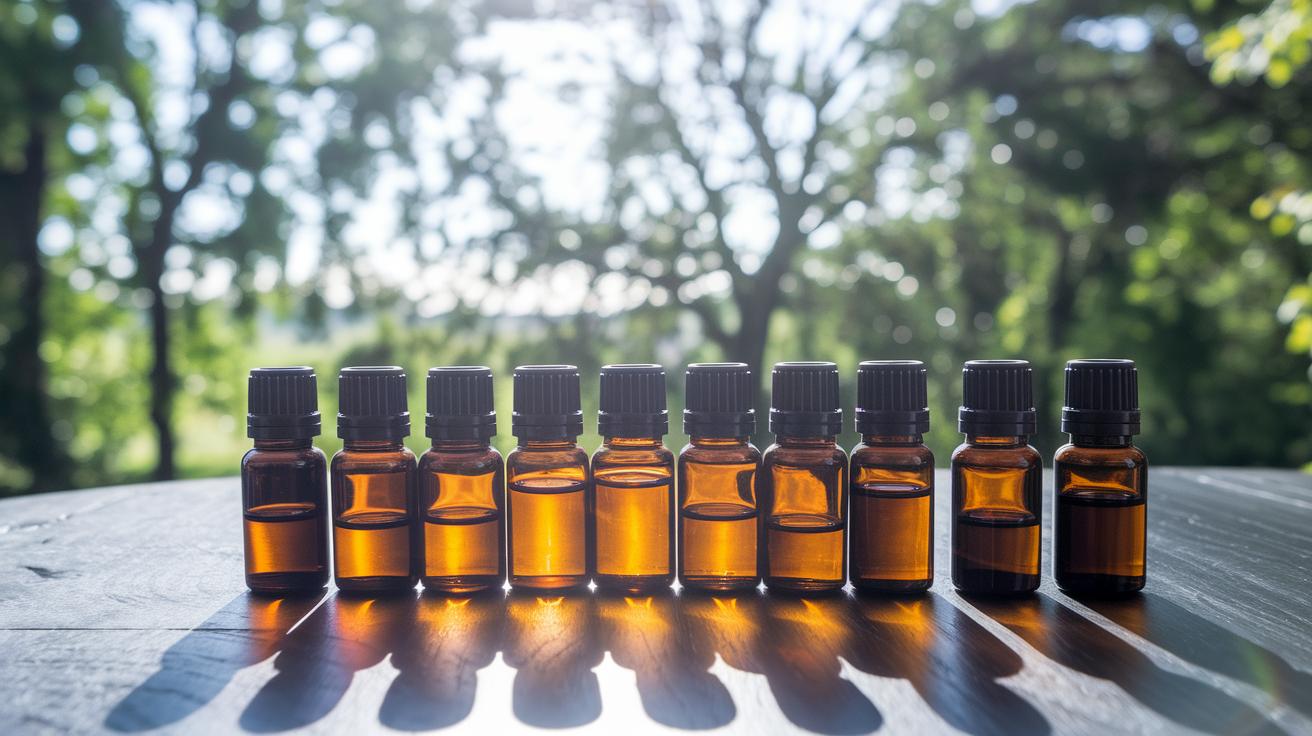
Here at Organic Aromas, we believe every breath of essential oil should feel like plant magic! Have you ever noticed how a fresh drop of lavender can soothe your mind? When you shop, look for USDA Organic certification and GC/MS reports (lab tests that show you exactly what’s inside). Skip anything made with chemical solvents, true oils come from steam distillation (where steam gently pulls out the oil) or cold pressing (squeezing oil out without heat).
Store your oils where they’ll be happiest. Dark glass bottles keep light out, and cool, dry spots protect delicate phytochemicals (plant compounds). A typical shelf life runs one to three years, depending on each oil’s makeup.
Here are a few red flags:
- Cloudy oil or tiny bits floating around
- A sour or odd smell instead of a fresh, true aroma
- A price that feels too good to be real, you usually get what you pay for
- No batch number or vague origin details
Think of your essential oil like a fine wine. It needs a steady temperature and minimal light to stay bright. A row of amber bottles in a cupboard or drawer works wonders. Avoid clear plastic or sunny windowsills. That way, every time you twist off the cap, the aroma greets you like a garden breeze, clean, bright, and ready to support your wellness ritual.
Essential Oils Buying Guide: Tips, Brands, and Cost Considerations
Have you ever noticed how some essential oils feel like a splurge while others cost less? It all comes down to plant-to-oil ratios. For example, it takes about 250 pounds of lavender flowers to make just one pound of lavender oil. That’s a lot of blooms for a little bottle of aroma.
Next, think about starting with a sample kit. These kits let you try a few drops before you buy full bottles. You can see how your skin reacts, how strong the scent feels, and which notes you truly love, all without spending too much.
Here are a few friendly tips to balance cost and quality:
- Look for GC/MS testing results (reports that show what’s really in the oil). Many budget-friendly lines share these lab reports to prove purity. You might find their chemistry matches pricier brands.
- Compare premium lines carefully. Sometimes higher prices pay for glossy packaging, marketing, or celebrity names, not better oil.
- Buy in bulk if you use an oil every day. Larger sizes lower the cost per ounce. Then store them in dark glass bottles away from heat to keep the oil fresh and prevent oxidation (when oxygen breaks down the oil).
Finally, choose suppliers with clear sourcing, honest prices, and full extraction details. Always check for a batch number on each bottle. And beware of vague “medical grade” labels that lack proof. A little research goes a long way to smart, cost-effective purchases.
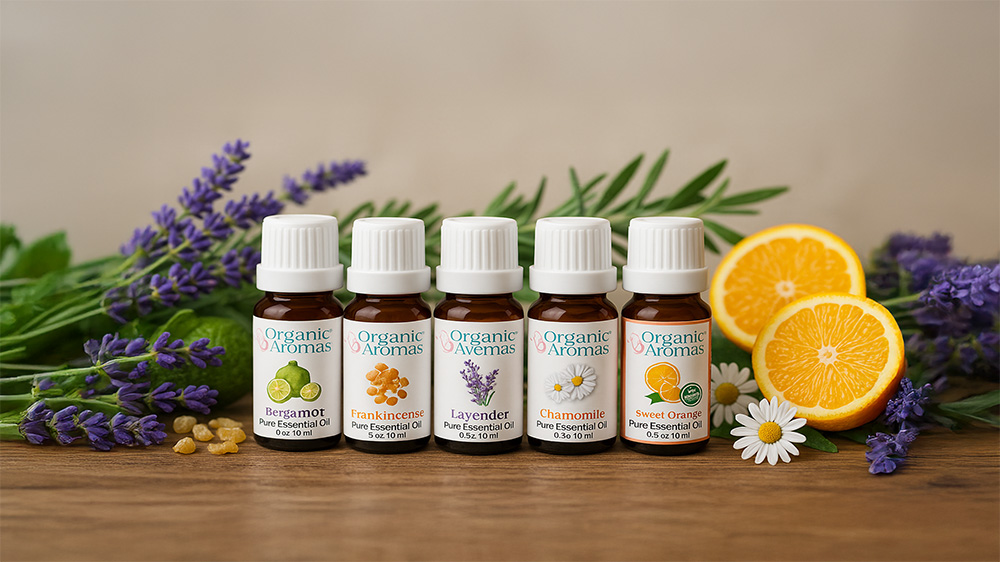
Each type of oil has its unique benefits for your wellness.
Final Words
Embracing these concepts can lead to a deeper understanding of wellness.
We’ve kicked off by defining essential oils and showing how steam distillation, cold pressing, and solvents draw out nature’s potency.
Then we explored popular oils, floral, citrus, wood, and walked through diffusion, topical blends, and inhalation methods.
We’ve also unpacked brain-body benefits, safety steps (dilution, patch tests), purity checks, storage tips, and cost-savvy buying advice.
Feel confident bringing what are essential oils into your daily routine, and enjoy a naturally soothing space that lifts your mood.
FAQ
What are essential oils?
Essential oils are highly concentrated plant extracts that capture a plant’s aroma and natural compounds in a gentle mist of healing molecules.
What are essential oils made of?
Essential oils are made of phytochemicals like terpenes (fragrant plant molecules), phenolic compounds (antioxidant parts), and flavonoids (plant pigments), all drawn from roots, leaves, flowers, or bark.
What is the difference between essential oils and normal oils?
Essential oils differ from normal oils because they’re pure plant extracts without fats—normal oils (carrier oils) are fatty and dilute scents, while essential oils deliver undiluted aroma molecules for therapeutic benefits.
What types of essential oils are available?
Essential oils come in citrus (lemon, orange, bergamot), floral (lavender, rose), wood (cedarwood, sandalwood), spice (clove, cinnamon), and herbal (rosemary, eucalyptus) groups, each offering unique aromas and benefits.
What are the 7 essential oils?
The seven essential oils commonly recommended include lavender, tea tree, peppermint, eucalyptus, lemon, rosemary, and frankincense for stress relief, focus, respiratory ease, and skin support.
Where can I buy essential oils?
Essential oils are available at health food stores, online specialty retailers, organic markets, and wellness shops; choose brands with USDA organic certification or GC/MS lab reports to ensure you’re getting pure, high-quality oils.
How can essential oils benefit hair?
Essential oils benefit hair by nourishing follicles, reducing breakage, and adding shine; rosemary oil supports growth, lavender calms scalp irritation, and peppermint boosts circulation—all when properly diluted with a carrier oil.
How do I use essential oils on skin?
Essential oils for skin use must be diluted in a carrier oil (1–5% ratio); apply via massage blends, roller bottles, or bath oils; always perform a patch test to check for sensitivity before full application.
What are the benefits of essential oils?
Essential oils offer stress relief, sleep support, mood boost, headache relief, and antimicrobial action; they gently engage your limbic system through inhalation or topical use, helping you feel balanced and calm.
Are essential oils safe to use?
Essential oils are safe when used properly: dilute for topical use, limit drops in diffusers, perform patch tests, and avoid ingestion unless labeled safe; observe guidelines for children, pets, and pregnancy.
They are essential to creating a wellness-focused atmosphere.
Using these recipes can greatly enhance your wellness experience.
As you explore these benefits, consider your own wellness practices.

